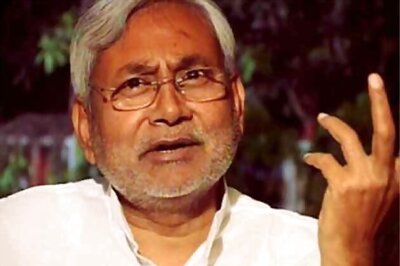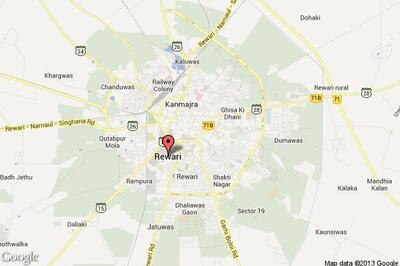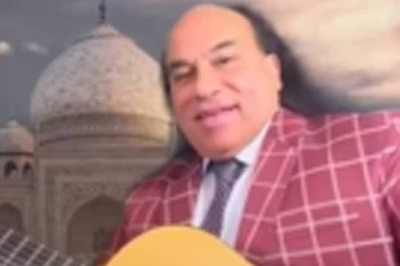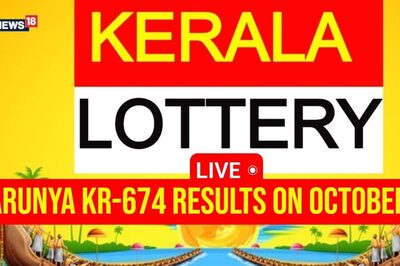
views
Patna: After deciding to stay away from the Narendra Modi 2.0 government at the Centre, the Janata Dal United (JDU) leader Nitish Kumar has decided to embark on his party’s expansion and capacity building plan at the national level to have its pan-India presence.
Holding the post of Bihar chief minister for the past over 13 years, Nitish intends to emerge as the most-accepted leader of the left-of-the-Centre politics in northern India, particularly in the Hindi heartland. With his well-crafted image of a clean politician and a performer, he desires to become an alternative face for the top post among the ‘non-Congress, non-BJP’ political outfits.
This opportunity has come to the JDU after the crushing defeat of Congress at the national level, electoral setback to RJD and its regional allies in Bihar, and perceived dwindling base of the Samajwadi Party and Bahujan Samaj Party in the neighbouring Uttar Pradesh. The Trinamool Congress, too, is struggling to withstand the onslaught of the resurgent BJP in West Bengal.
Under such circumstances, the JDU leader has begun the exercise to fill the void and expand his horizon beyond Bihar — at least in Hindi heartland and north-eastern states. He is attempting to draw a bigger line than the present regional leaders such as Akhilesh Yadav, Mayawati, Mamata Banerjee and Naveen Patnaik.
Buoyed by the grand victory in Bihar in the 2019 Lok Sabha elections, the JDU leadership is gearing up to play a bigger and decisive role at the national level. To begin with, the JDU has decided to increase its footprints in smaller states by increasing the number of MLAs and percentage of votes to attain the status of national recognised party by 2020.
At its post-poll national executive meeting held recently in Patna, the JDU resolved that it will not be a part of the BJP-led NDA outside Bihar but will contest the upcoming assembly polls in four states on its own to make the JDU a potent force beyond Bihar.
“We will fight the elections in four states of Delhi, Haryana, Jharkhand and Jammu and Kashmir with all our might and strength and we will strive to achieve the status of a national party by 2020,” said JDU secretary general K C Tyagi.
However, the JDU, which is now a recognised party in Bihar and Arunachal Pradesh, will continue to be part of the NDA at the Centre and will contest the Bihar assembly election in 2020 under the NDA banner.
To achieve this goal, the party is set to give a face-lift to the organisation with many new faces. Youngsters, in particular, are likely to be inducted at the state and national level to give the party a youthful look. The task of this capacity-building exercise has been primarily given to poll strategist and party vice-president, Prashant Kishor.
“We discussed the challenges ahead and plans to give the party a new look with an ideal mix of veteran leaders and relatively younger brigade representing every section of the society,” said state party president Bashishtha Narayan Singh after the meeting.
The selection of Jammu and Kashmir is important and indicative of party’s firm stance on core national issues because the JDU has diametrically opposite stand on Article 370 and Article 35A vis-à-vis the BJP. The BJP wants abrogation of Article 370 and 35A, while the JDU wants consensus among all stakeholders before taking any final decision on such contentious issues.
However, it is not for the first time that Nitish has made attempts to become a key player in the national politics. In the run-up to the 2014 parliamentary polls, he was peeved at the elevation of Narendra Modi as the prime ministerial candidate by the BJP.
In reaction, Nitish, along with Trinamool Congress leader Mamata Banerjee, had mooted and unsuccessfully explored the possibility of Federal Front comprising Biju Janata Dal led by Naveen Patnaik, Jharkhand Vikas Morcha led by Babulal Marandi and regional outfits of the north-eastern states.
The main concern of these regional satraps then was that both the Congress and BJP treated the regional outfits as mere supporters in the game of numbers during government formation. Nitish had given a call to heads of other economically backward states to come together for seeking adequate share in central funds vis-à-vis developed states like Maharashtra and Gujarat.
In 2017, when Nitish was part of the grand alliance, he had asked Rahul Gandhi to take a firm stand on corruption against Tejashwi Yadav but Rahul’s wavering stand and his ‘inability’ to take a stand on corruption forced Nitish to exit the grand alliance.
“Nitish felt let down by Rahul Gandhi. Had Rahul responded to Nitish’s overtures, the political situation could have been entirely different before the 2019 Lok Sabha polls. It was JDU that was instrumental in the Congress getting 40 seats to contest in the 2015 assembly polls,” Tyagi pointed out.
But the JDU’s past forays into other states have not yielded desired results to catapult Nitish as an ‘acceptable leader’ at the national level. The party performed miserably in the last Rajasthan and Chhattisgarh assembly elections. It contested 12 seats each in Rajasthan and Chhattisgarh but could garner only a total of 24,107 votes and all its candidates lost their security deposits.
In Karnataka, the JDU lost all the 27 assembly seats it had contested while its performance in Gujarat was below par as it could not open its account even though it contested on 38 seats.
The JDU had earlier failed in Assam where it had contested on four seats in collaboration with AIUDF, whereas in Kerala it had contested on four seats under the Congress-led United Democratic Front but lost all seats, including two sitting seats.
At present, the JDU has one MLA in Nagaland and runs an alliance government with the BJP, while in Manipur it contested one Lok Sabha seat this time but lost. However, in Arunachal Pradesh, the JDU has seven MLAs, the second largest chunk in the 60-member state assembly.
The JDU had made considered foray into Jharkhand way back in 2000 but it could not gain strength because of lack of powerful leadership. Its lone MLA and state president Jaleshwar Mahato was considered close to Nitish but he later quit and joined Congress.
The JDU had once opened its account in the Delhi assembly polls by winning from Matia Mahal constituency out of the 26 seats it contested eyeing the votes of the Purvanchalis. But it trailed behind BJP and AAP in terms of votes in other constituencies.
The JDU won 16 Lok Sabha seats in Bihar and secured 21.81% vote share this time but it is far behind meeting the criteria of a national party. It will have to wait till it garners minimum 6 per cent of votes in state assembly or Lok Sabha polls at least in four states.
With indication of Nitish’s discomfiture with the BJP, the alliance may turn untenable and a split cannot be ruled out before the 2020 Bihar assembly elections. Overtures on JDU-Congress-RJD alliance are already in the air, given the way the chips are stacked against allies of the mahagathbandhan.
(The author is a senior journalist. Views expressed are personal.)



















Comments
0 comment